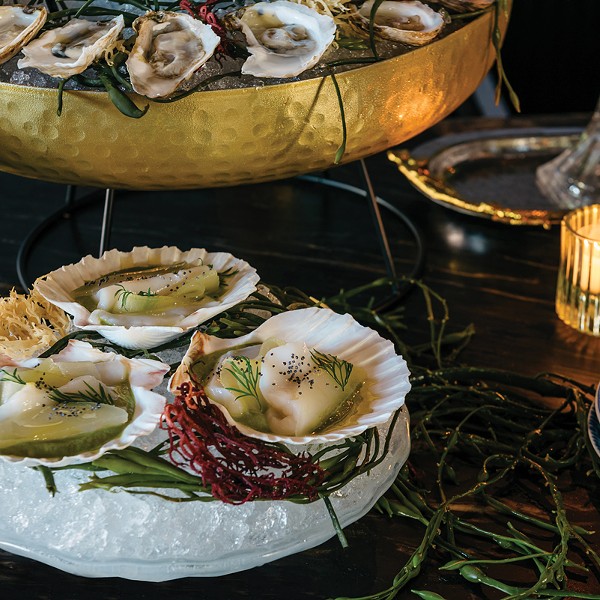Serevan, in spirit, culinary charm, and humble nature, is more than a restaurant, a place to eat. It is an integral piece of the community, a spoke in the grand wheel of the Hudson Valley. The beauty and distinctiveness of Serevan lies in its historical charm and architectural finesse—living, breathing entities that have been gently cultivated by an Armenian from Tehran, chef and proprietor Serge Madikians.
Serevan’s location in Amenia (which is derived from the Latin word amoena, meaning “pleasing to the eye”) is quintessentially picturesque farm country: rolling green hills, horse farms by the dozen, and far removed from strip malls. Serevan is housed in a former farmhouse that was built in the 1880s. Over the years, it’s been a bar, a brothel (what establishment of a certain age hasn’t?), the scene of an unresolved murder (ditto previous comment), and more recently, an Italian restaurant.
When Madikians came onto the scene, he transformed the dwelling and grounds into a lush, gastronomical oasis. Windows were replaced, the entrance relocated, and the surrounding walls reinforced. Inside, some of the original floors and overhead beams were exposed and refurbished. The walls were painted in colors that kept history and nature in mind—a rich Sherwood green and a warm, deep Van Deusen blue—and adorned with local artwork. On each table are small potted herbs, and baskets of fresh rosemary hang from the walls of the open kitchen; both are utilized for cooking. In the restaurant’s main dining room, not unlike a typical living room, the fireplace mantle is full of family photos, including Madikians’s grandfather, a particularly strong source of inspiration and strength for him. The elder Madikians survived the Armenian genocide, an escape to Iran, two political imprisonments, and still managed to start a family. With other family members in 1937, he opened Café Naderi, which is still in the family and was recently declared a historic site by the Iranian government.
Outdoors, tables are set up on a charming patio, screened off from the road by a variety of plants and herbs, including smoke bushes and red cabbage, Japanese willow, verbena, and several types of edible flowers. In the back, the flower, herb, and vegetable garden includes (to name a few) Persian tarragon, thyme, curry, oregano, pineapple sage, pineapple mint, Thai basil, shiso, five kinds of cucumbers, green beans, tomatoes, nasturtiums, squash blossoms, zucchini, and Swiss chard. To understand Serevan is to understand the elements of Madikians’s garden, and how it addresses the cycles of nature—a process that ultimately instills in him a sense of humility and, at the same time, gratification.
“The closeness I feel with the earth, my own vegetables and their needs, really compels me to understand, respect, and better appreciate them.” Madikians believes his job is “to have a visceral dialectic with the ingredients.” In other words, to “listen to the ingredients rather than imposing my will on them. They will tell you what they want.”
This all makes perfect sense when you consider Madikians’s collaboration with local farmers and understanding of how farmers operate within natural constraints. Madikians is cognizant of “how [farmers] have to work with the forces of nature to be able to produce their own harvests.” Combine this with his apprenticeship with some of the best chefs in the world, including David Bouley and Jean-Georges Vongerichten, his background in music, his education in history, philosophy, and dance, and you can understand how his holistic view of creating beautiful food has brought him to where he is today.
The California- and New York City-schooled student of urban planning and economics made his way to the Hudson Valley after attending the French Culinary Institute in Manhattan and working at celebrated venues like Jean Georges, Monkey Bar, Bouley Bakery, and Danube, eventually taking the executive chef job at Chez es Saada. Additional stints followed in both New York City and California until the spring of 2002, when he became executive chef at Main Street Bovina in the Catskills. Subsequently, Madikians stayed at, and visited several towns in the Hudson Valley and further upstate, looking for a place that would enable him to be part of, and closer to, the cycle of life—before finding Amenia, which “spoke to him” unlike anywhere else he had been. Though educated, experienced, and urbane, it was as if Madikians had begun anew. The abundance and cycles of nature that only the country could provide ignited his deepest artistic sensibilities, and so Serevan, named for a bird found on the Ile de France in the 18th century, was born.
















